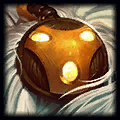

Varus vs Senna

How to Beat Senna as Varus
based on 11,931 Varus vs Senna matchupsHow We Analyze LoL Champion Counters
Varus vs Senna Matchup Summary
Best Varus vs Senna Counter Build
Items
Starter Items


Early Items


Core Varus Items



Optional Items




Summoner Spells


Skill Order



Runes
















Guide to Countering Senna as Varus
Tips for Playing as Varus against Senna
Try to take advantage of Piercing Arrow's very long range to snipe at enemy champions before a fight or as they're trying to flee.
An early point in Blighted Quiver helps harass enemy champions and get killing blows on minions.
During short range fights it's sometimes best to fire Piercing Arrow quickly, rather than charging it to full power.
Varus vs Senna Counter Stats


How to Counter Senna with Varus in LoL
The stat comparisons provided here underscore some valuable Varus vs. Senna matchup stats that may help us grasp the differences between the two. As an example, Varus’s KDA ratio ([kills + assists] / deaths) of NaN is more than Senna’s ratio of NaN, highlighting that Varus may be more central to his team's team fighting capability than Senna..
Varus typically has a slightly larger longest killing spree than his matchup does. Commonly, he takes a similar amount of damage to Senna. This often reflects differing health capacities; however, it can also imply that the champ with higher health has less agility and thus is not able to kite away from additional harm when engaged or poked.
Differences between Varus and Senna
Damage Types Compared
Champion Playstyles Compared
Who is Better, Varus or Senna?
Both LoL champs are great champions. Both champs have their pros and cons. In League's current meta, Varus usually loses when playing against Senna, with a 48.2% win rate. Therefore, Varus makes a bad counter for Senna.
While Varus does have a lower winrate than Senna, when on opposite teams, Varus also has a much lower learning curve that makes him a less difficult champion to pick up and master. You still need to be cautious when picking Varus into Senna.
Furthermore, Varus has only a small amount of CC and other utility, a similar amount to Senna. This often makes her just as valuable during teamfights, especially when facing champions with a lot of burst damage.
While there isn't one best champion in League of Legends, in Varus vs Senna matchups, Senna is the better champion with a lower win rate, less champion complexity, and a similar amount of utility to help out your allies during late stage team fights.
Varus is a somewhat poor counter to Senna. You will do well by focussing your strategy on increasing your gold and cs and destroying objectives. If you do that, you should hold your own as Varus against Senna.
Other Champion Matchups Against Varus
Additional Information for Varus Players
How We Calculated Our Varus vs Senna Build and Stats
Other Useful Resources
Further Insights to Win this Matchup
If you would like to learn all of the intricacies of Varus to counter Senna during both the laning and mid / late game phases of League of Legends, you should keep reading to learn a few extra tips and tricks for this matchup. If you listen to the build and stats displayed above, you will grow your win rate by a lot and be that much closer to League of Legends pro players.
Varus on average racks up more CS compared to Senna. Champs who typically don't take many minion kills usualy don't need much CS to be effective, such as support champions. They are able to scale properly off of their skills, stats, and first items alone. Yet, champions with a lot of CS, such as hyper-carries, typically require many items to be effective. In either situation, try to do better than the values shown here to do well.
The best items to prioritize in your Varus versus Senna build include Muramana, Hubris, and Opportunity. When Varus incorporated at least these three pieces in his build, he performed much better vs. Senna than with many other commonly used counter builds. In fact, Varus boasted an average win rate of 48.2% when playing against Senna with this build.
To have the greatest likelihood of vanquishing Senna as Varus, you should take the Arcane Comet, Manaflow Band, Transcendence, Scorch, Magical Footwear, and Biscuit Delivery runes from the Sorcery and Inspiration rune sets. Out of all the rune builds players used for Varus vs Senna clashes, this combo of runes yielded the greatest win rate. In fact, these runes gave a 48.2% winrate overall.
By default, tips, statistics, and builds on how to beat Senna as Varus are presented for all skill levels combined. If you want to narrow the statistics and builds to a distinct division, you should use the selection menu earlier on the page.




































